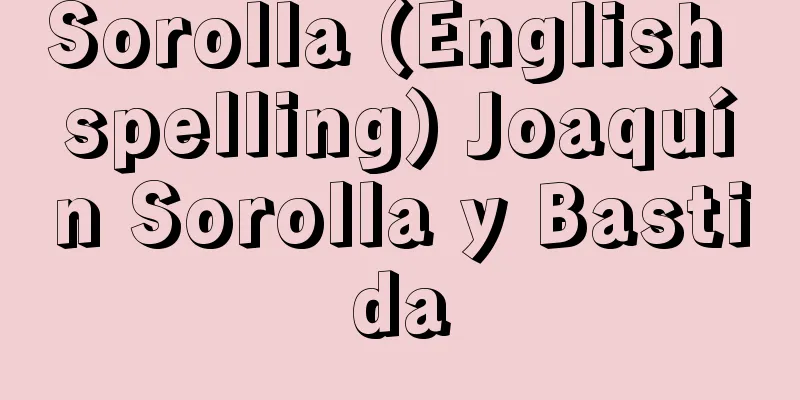Herondas - Herondas (English spelling)

|
Also known as Herodas or Herodes. A Greek mimos writer active in the first half of the 3rd century BC. Pliny the Younger mentions him alongside Callimachus in his letter (Letter 3 of Book 4 of the Letters). He certainly lived for a long time on the island of Cos in the eastern Aegean Sea. His works are written in the Ionian dialect, but they are not colloquial, but rather in a refined, pseudo-archaic language that makes use of extinct vocabulary. They are also significantly influenced by Attic tragedies and ancient comedies. In addition to a few quoted fragments, eight of his works were discovered in papyrus in Egypt in 1891. The meter is based on the lame ianbos, v-v--v--v--v---. The contents are skits using everyday, familiar themes. For example, "The Mediator, or the Intercessor" features an old woman who tries to introduce a young man to his wife while her husband is away; "The Housekeeper" features a husband who takes his maid to court for being assaulted; and "The Teacher" features a teacher who beats a lazy student at the request of the student's mother. There is also "Women Offering Sacrifices to Asclepius," which is based on the same subject as Sophron and Theocritus. "The Jealous Woman," "Whispers," and "The Shoemaker" are all stories that could be seen today. "The Dream" is a fragment, but it is likely to be a defense and hope of his own work, entrusted to the dreams of peasants. These works appear to have been recited rather than performed, and consist of short lines of dialogue. [Kizamaki Kiyozo] "Takatsu Harushige's translation of "Pseudome" (Iwanami Bunko)" Source: Shogakukan Encyclopedia Nipponica About Encyclopedia Nipponica Information | Legend |
|
ヘロダス、ヘロデスとも。紀元前3世紀前半に活躍したギリシアの擬曲(ぎきょく)(ミモスMimos)作家。プリニウス(小)は書簡(書簡集第四巻の第三書簡)のなかで、カリマコスと並べてその名をあげている。東エーゲ海のコス島に長くいたことは確かである。その作品はイオニア方言で書かれているが口語ではなく、死滅した語彙(ごい)をも生かした擬古文で、練り上げられた文語である。またアッティカの悲劇と古喜劇の影響が著しい。僅少(きんしょう)の引用断片のほか、1891年にエジプトでパピルスのなかから八作品が発見された。韻律は跛行(はこう)イアンボスというv‐v‐―v‐v‐―v‐‐‐―を基本にしている。 内容は日常の卑近な題材を使った寸劇である。たとえば『なかだち、またはとりもち婆(ばばあ)』では、夫の旅行中に妻に若い男をとりもとうとする婆、『おき屋』では、自分の抱え女が暴行されたことを法廷で訴える亭主、『先生』では、怠け者の生徒を母親の頼みで殴る先生が、それぞれ登場する。また、ソフロン、テオクリトスと同じ題材にちなんだ『アスクレピオスに奉献し犠牲を捧(ささ)げる女たち』もある。『嫉妬(しっと)深い女』『ひそひそ話』『靴屋』はいずれも今日でもみられそうな話である。『夢』は断片だが、百姓の語る夢に託した自分の作品の弁護と希望であろう。これらの作品は上演よりも朗読したらしく、短い台詞(せりふ)からなっている。 [風間喜代三] 『高津春繁訳『擬曲』(岩波文庫)』 出典 小学館 日本大百科全書(ニッポニカ)日本大百科全書(ニッポニカ)について 情報 | 凡例 |
Recommend
Kawamata Mikuriya
…According to the deed of succession in 1252 (Ken...
Hornet - Hornet
A general term for a group of parasitic wasps in ...
Aconite - Ugly
The title of a Kyogen piece. Tarokaja Kyogen. The ...
Haavelmo - Trygve Haavelmo (English spelling)
Norwegian economist. Born in Skedsmo. Graduated f...
Ishikawa Ienari
He was a military commander during the Sengoku an...
Kurochiku (black bamboo) - Kurochiku (English spelling) black bamboo
A type of bamboo in the grass family. The black cu...
Watercolor - Watercolor
Paintings made with paints dissolved in water. In ...
Material stimulus - bushitsu shigeki (English spelling)
In China, the method of encouraging workers to wor...
altricial
…The former is seen in chickens and ducks, whose ...
Narukami - Narukami
Kabuki play. Historical piece. One act. Collabora...
Kyukhel'beker, VK (English spelling) KyukhelbekerVK
...As a result, five of the ringleaders, includin...
Selection of favorites - Kisenshiki
A book on waka poetry from the mid-Heian period. I...
Furnace - ro (English spelling)
A device designed to heat or melt something. A kil...
Thermography
[ I ] A copying method that utilizes the thermal ...
Mirror image dextrocardia - Mirror image dextrocardia
…(12) Dextrocardia A dextrocardia is a heart in w...



![Kitami [Hot Springs] - Kitami](/upload/images/67d04dcfb381e.webp)





